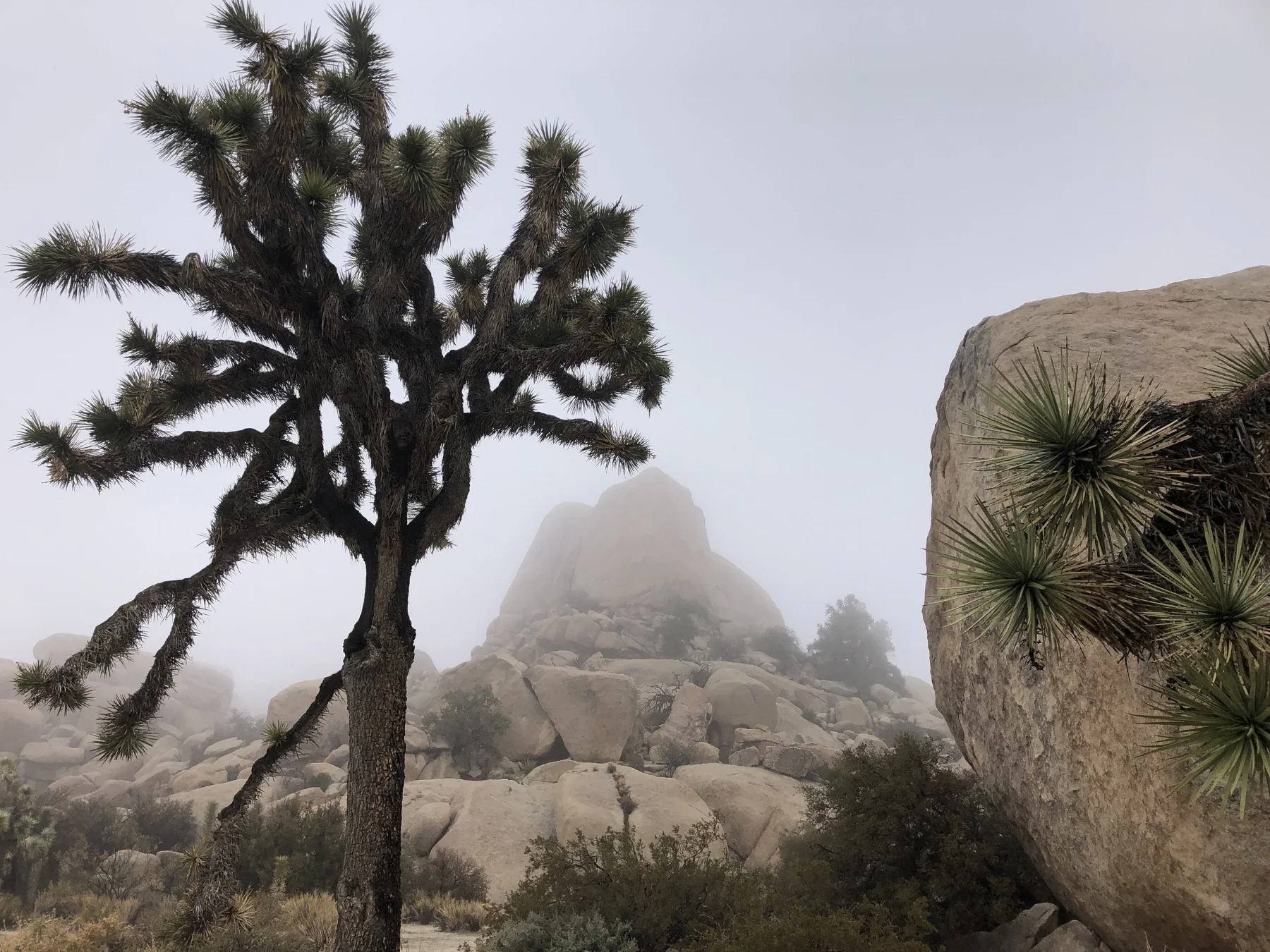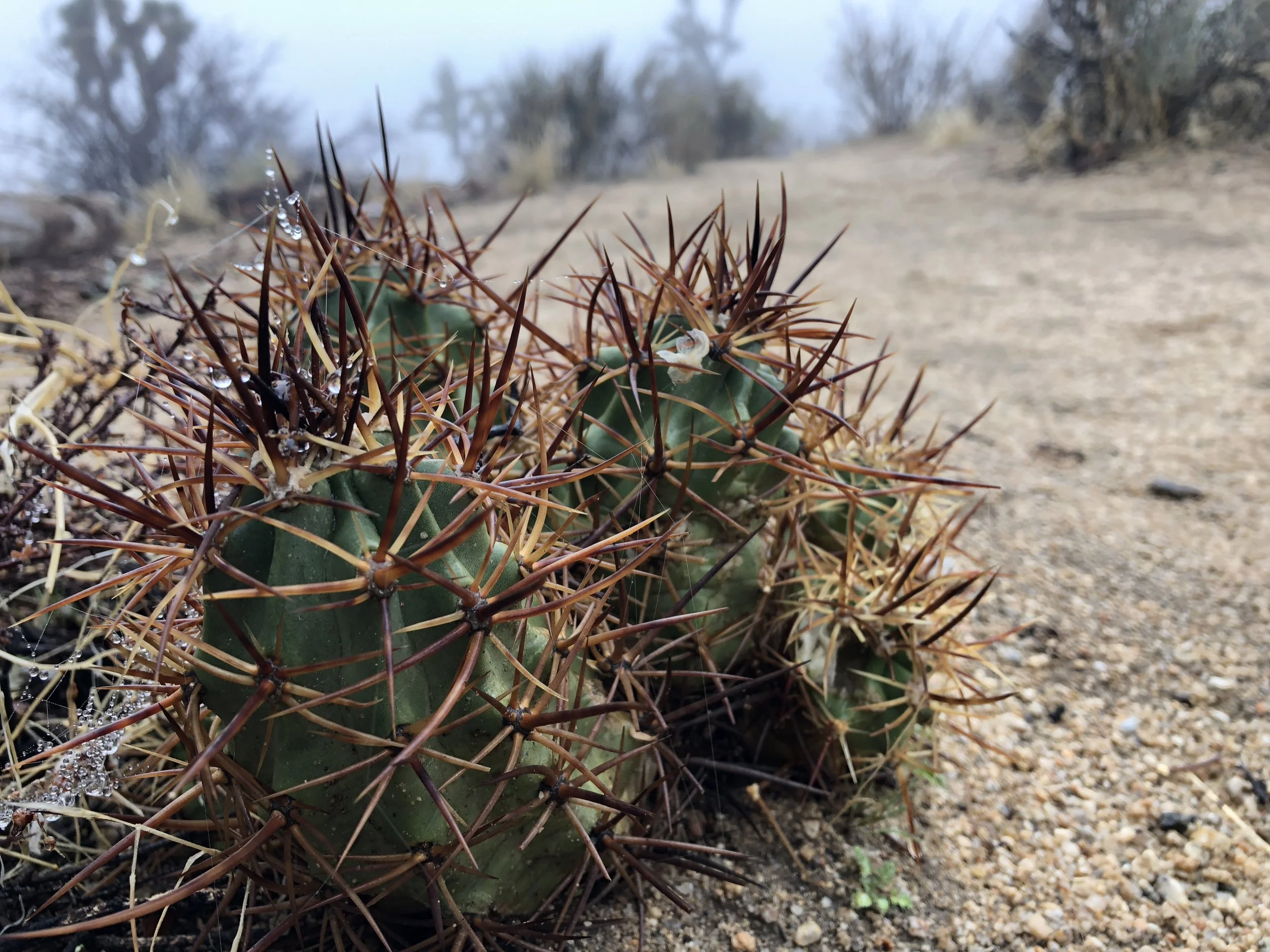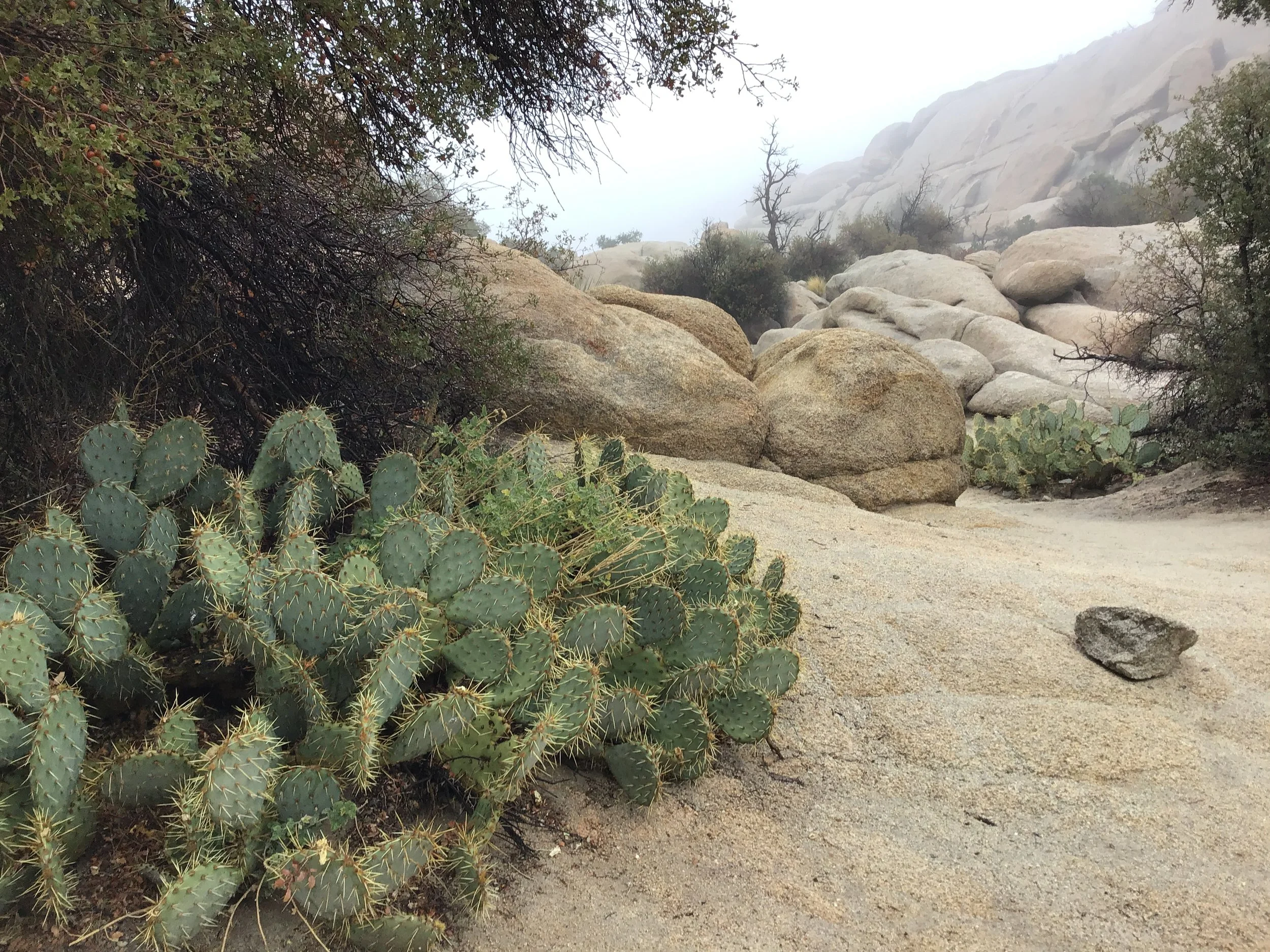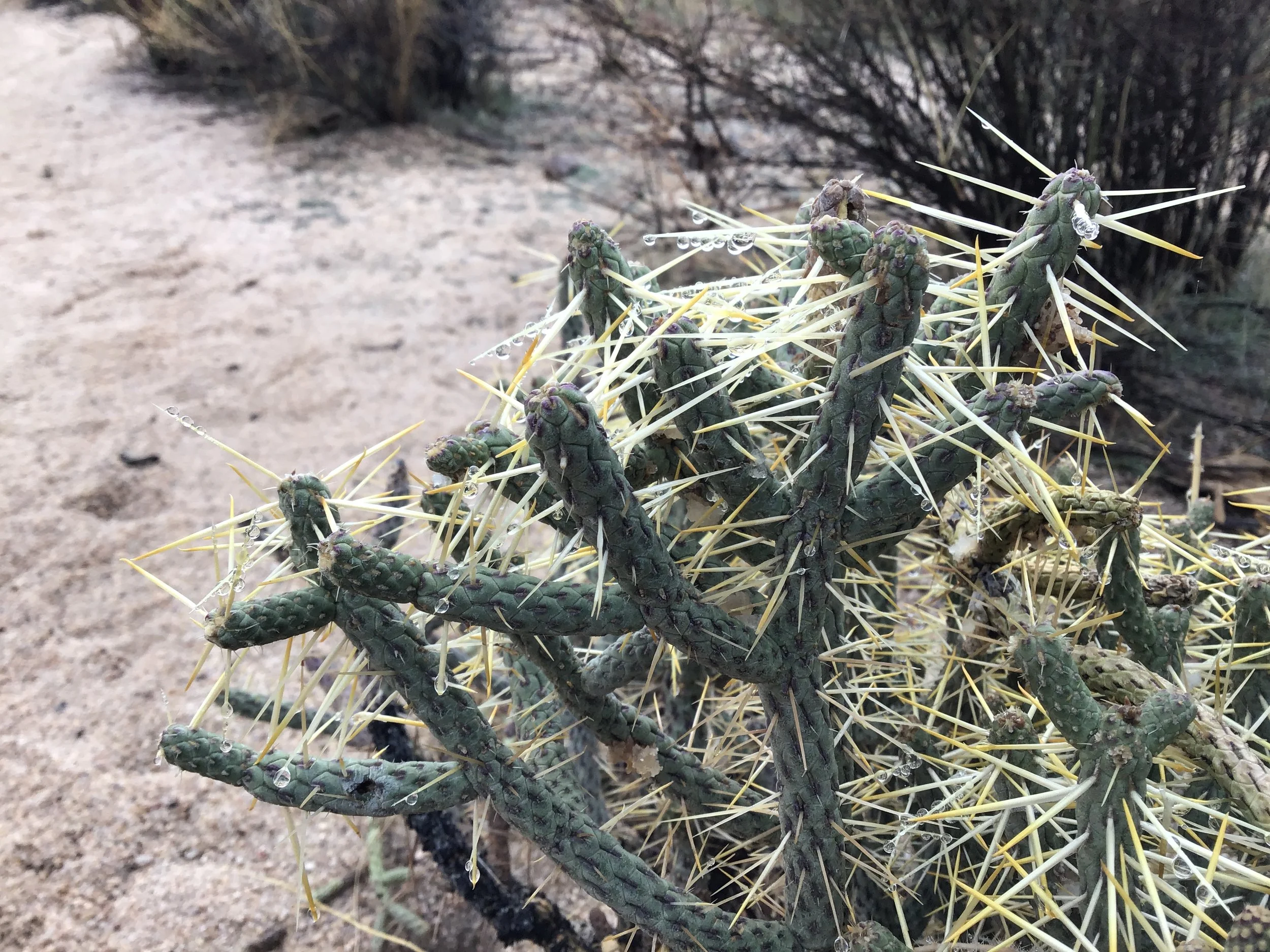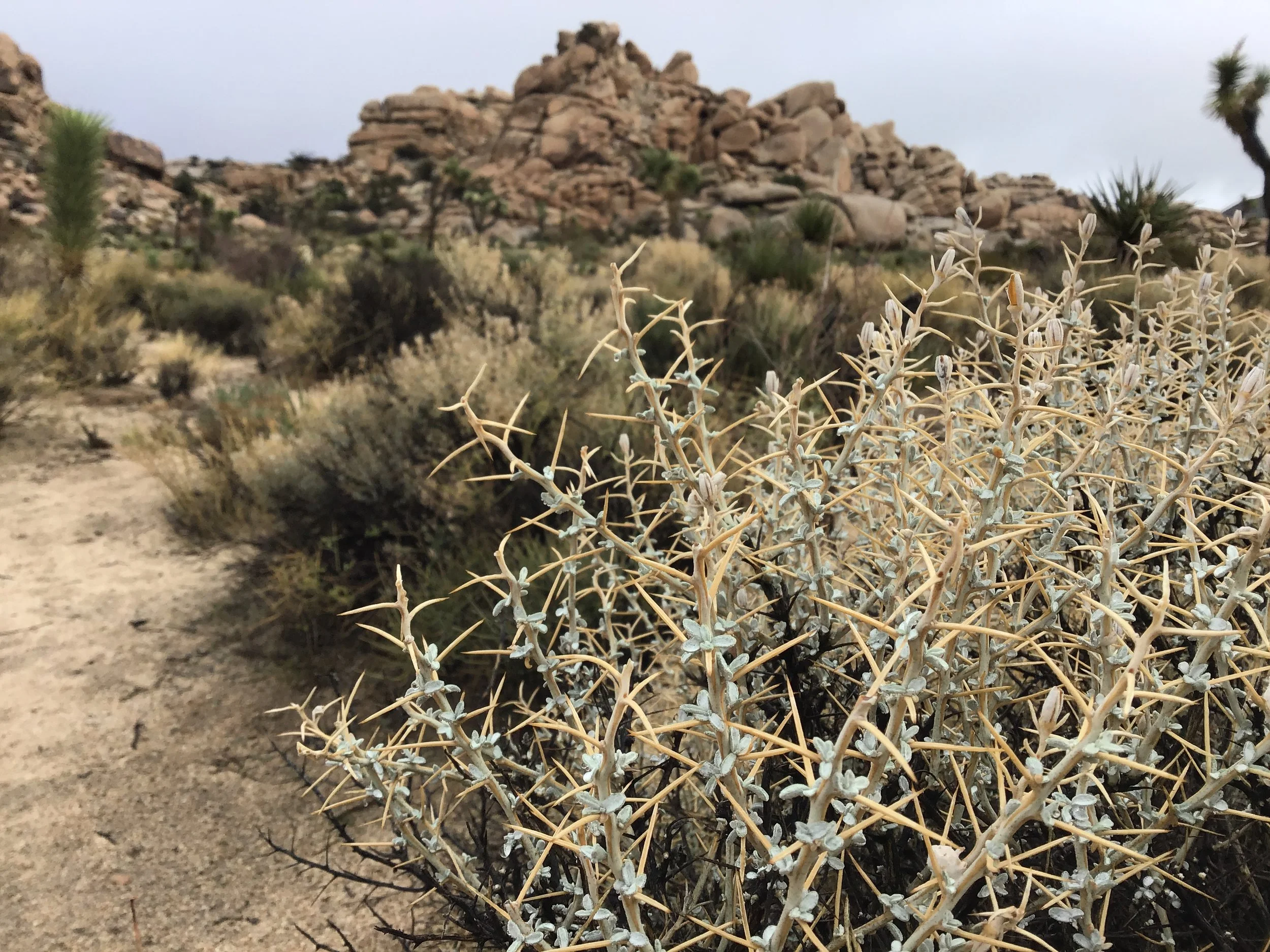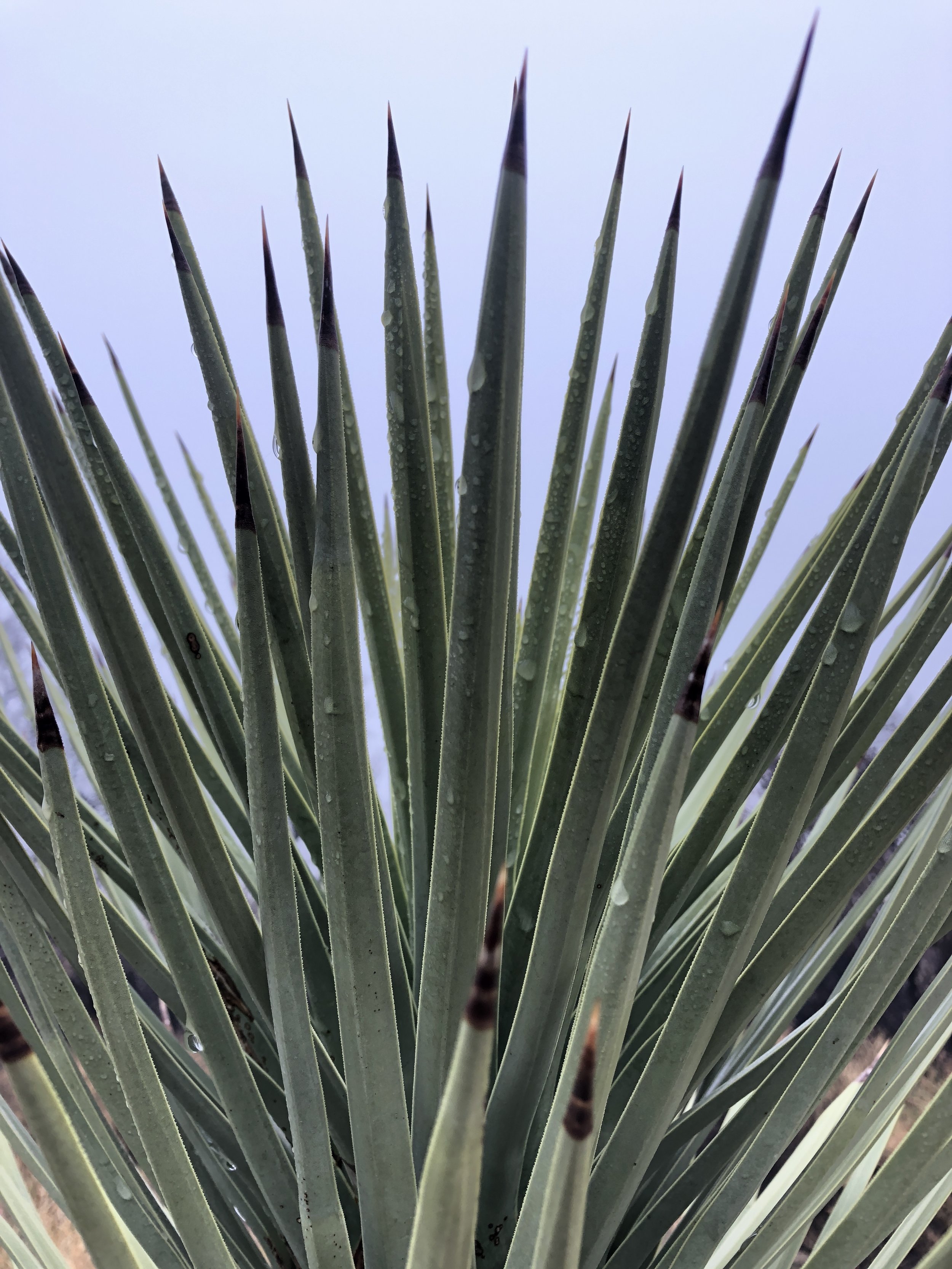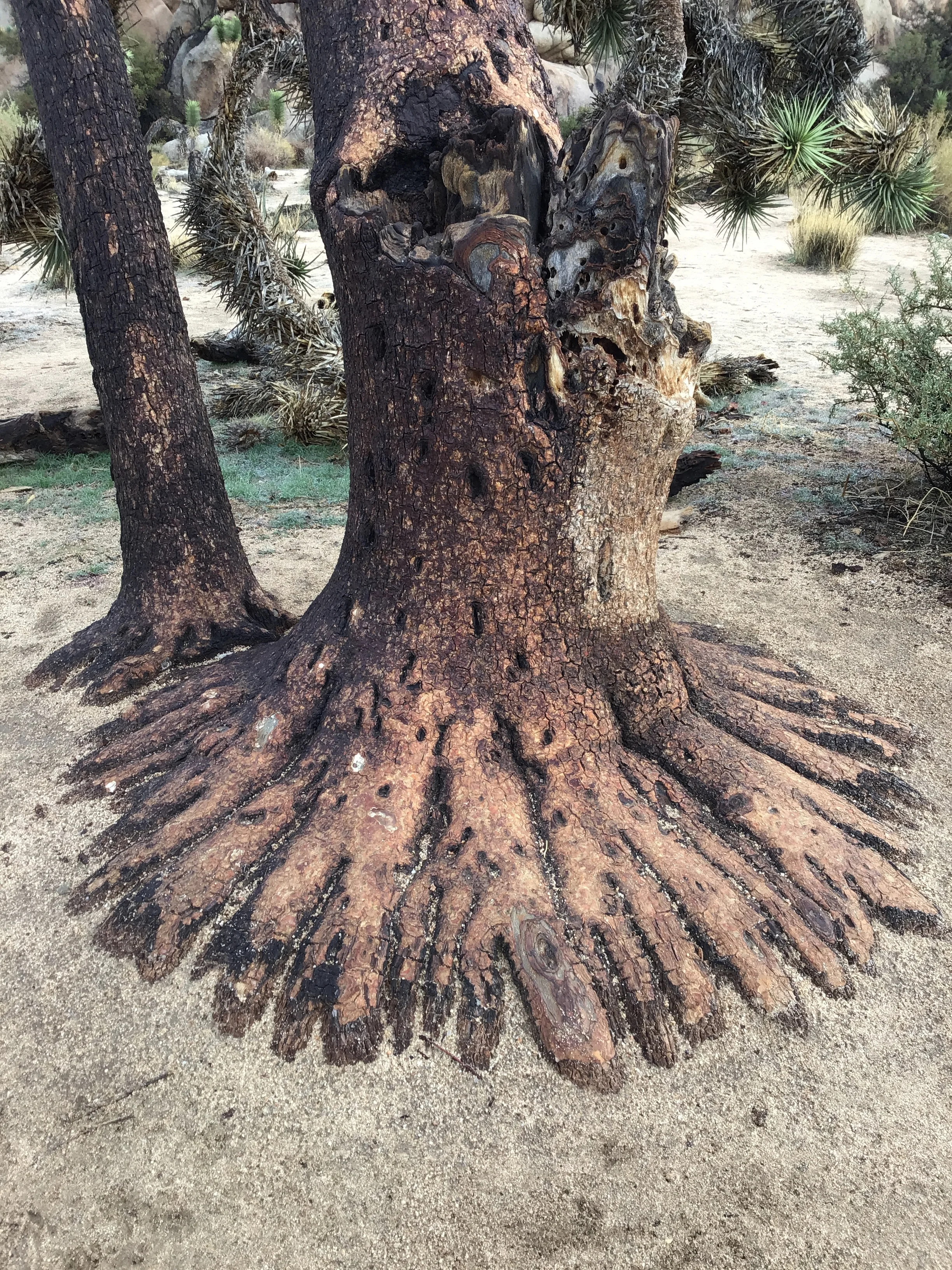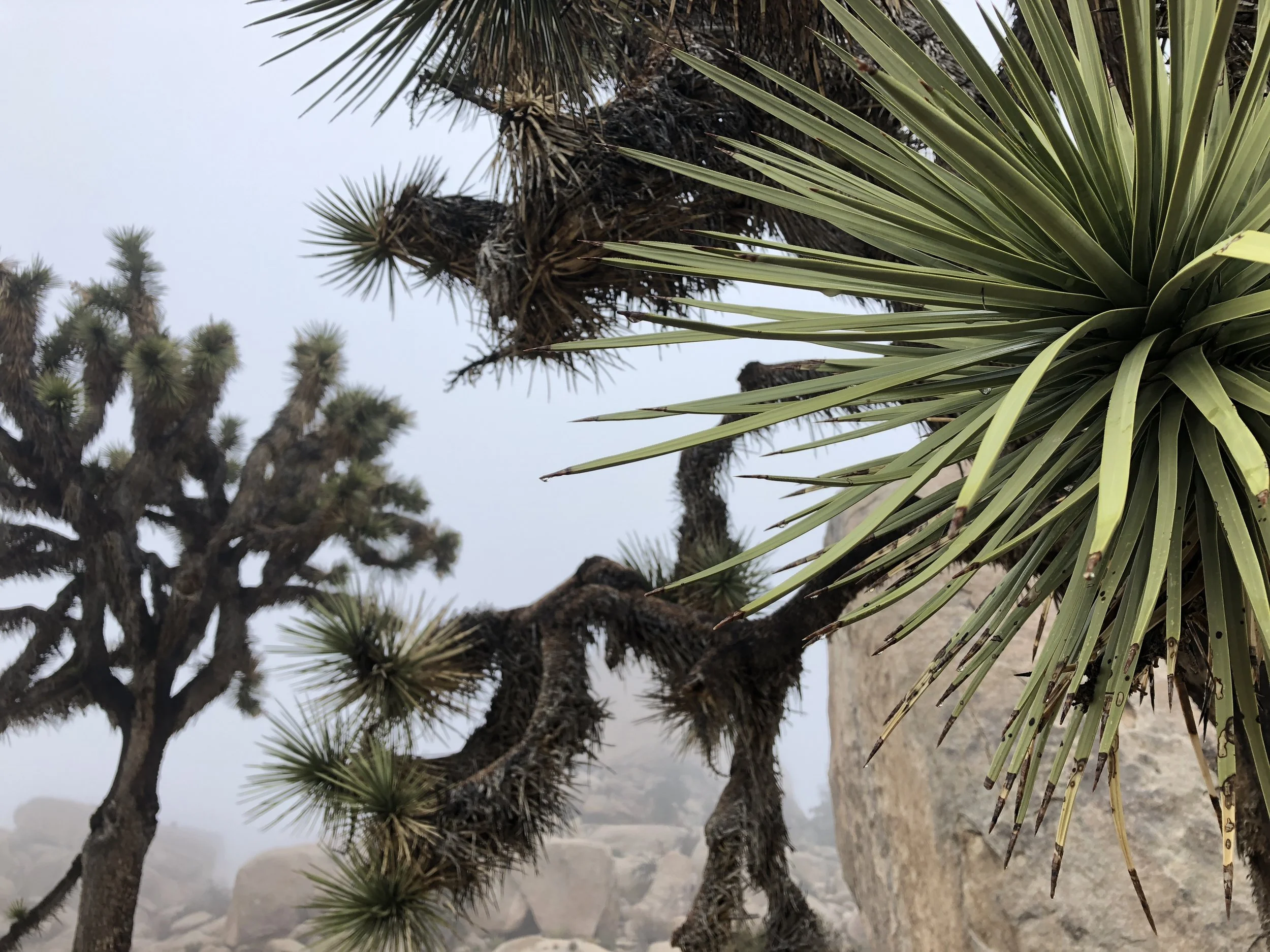I unzip the tent and slide open the damp fabric. It had rained all night. Now only a thick, humid mist remains, engulfing the ancient rocky monolith in the centre of the campground. A single Yucca brevifolia tree with its tapered spiky leafage stands sentry-like, reaching green into the milky haze.
Joshua Tree National Park - Californian desert.
Walking through the desert feels surreal, like I’m on a set for a movie. I meander, mesmerised, the unfamiliar vegetation glistening in the morning dew, perfectly positioned in dramatic contrast to the giant boulders and craggy rock piles.
At every step, a new discovery. This is a landscape of serrated edges, bristly surfaces and spiky leaves. I move carefully past briery blackbrush (Coleogyne ramosissima) and Spanish daggers (Yucca Schidigera).
Teddy bear Cholla cactus - Cylindropuntia bigelovii
I stop at the silvery cholla cacti (Cylindropunti bigelovii), bend down to look closely at the golden prickly pears (Opuntia chlorotica) and beavertail catcti (Opuntia basilaris).
Joshua Tree National Park - magical landscape
Everywhere, the Joshua trees – shaggy mystical dwellers of the Mojave desert; habitat for woodpeckers and orioles, sustenance for squirrels and deer; its roots spread wide and shallow to catch the sparse desert rainfall.
Barker Dam - Joshua Tree National Park
Joshua Tree National Park is approximately 220 kilometres (2 hours’ drive) east of Los Angeles on the Interstate 10 and then Highway 62. There are three entrances, two on the north end – Joshua Tree and Twentynine Palms - and one on the southern end on Highway 60, after Indio.
Camping grounds are scattered around the park, some can be booked, some are first come first serve.

